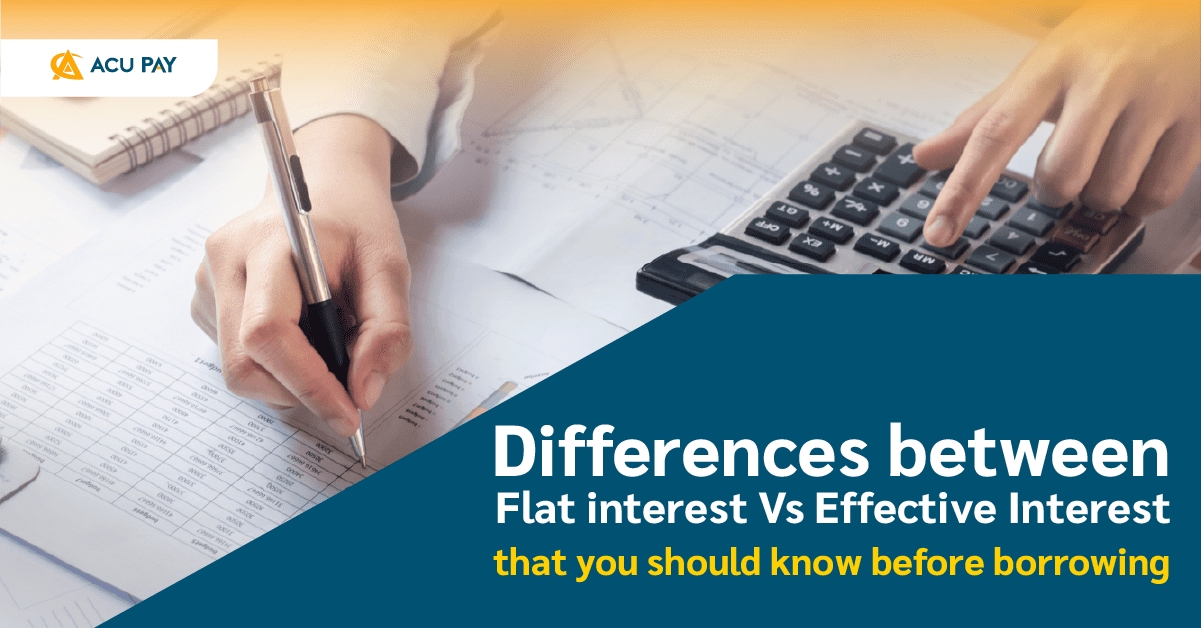

For anyone who is looking to apply for a home loan, automobile loan, or condo loan but still do not understand the differences between Flat interest and Effective Interest or wonder which one of them suits you better, read this article and you will understand more about those two types of interest.
Flat interest rate is an interest rate fixed by lenders and will not be adjusted throughout the contract even if the principal is reduced, the interest rate that the borrower has to pay is the same.
It can be calculated from the principal amount of the loan application and divided by the amount of interest payable at the same interest rate each time debt payment is made until the loan applicant has completed payment according to a mutually agreed loan agreement.
How to calculate
The whole amount of interest that have to be paid = The remaining principal x interest rate per annum x period of time (years)
For example, you apply for a loan of 200,000 baht with an interest rate of 20% per year and the total period of repayment is 3 years. Thus the total interest that you have to pay is 200,000 x 20% x 3 = 120,000 baht.
The advantages of Flat interest rate
The loan applicants pay interest at the same rate every time. Although interest rates have increased, the amount payable for each period is certain, making it possible to accurately plan financially.
The disadvantage of Flat interest rate
In case the interest rates fall, interest rates paid by loan applicants will not be reduced accordingly.
Suitable with whom?
People who want to pay installments for a car or some kind of thing with interest.
Effective interest is an interest calculated from the remaining principal in every installment. As a result, after some installments have been made, interest payable in the next installment will continue to decrease depending on the remaining principal rate.
How to calculate
interest payable in that period = (A remaining amount of principal x interest rate per annum x the number of days in that period) / 365 or 366 days (number of days per annum)
For example, you apply for a loan of 200,000 baht with an interest rate of 20% per year and the total period of repayment is 3 years (36 months) and the monthly installment payment is set at 6,000 baht per installment.
In the first month, the interest payable is 200,000 x 20% x 31/365 = 3,397.26 baht together with the principle of 2602.73 baht.
The interest on the loan will not be calculated at 200,000 baht in the next installment but will be calculated at 197,397.27 baht. The interest rate in the following month is only 3,353.04 baht and will gradually decrease with the principal falling.
Thus, The more principal we pay, the less interest.
The advantages of Flat interest rate
The interest rate charged in the next period will be reduced according to the remaining principal amount. This will help loan applicants to relieve debt faster and pay less interest.
The disadvantage of Flat interest rate
It may not be suitable for those who do not have a large amount of money which results in them not being able to reduce the interest rate as much as it should be.
Suitable with whom?
It is suitable for those who want to apply for home loans, personal loans, or savings cooperative loans.
That’s it. You may now understand more about the differences of Flat interest rates and Effective interest rates. ACU PAY hopes that you will choose the right interest rates that suit yourself and get to know more about the conditions of each type of interest before applying for a home loan, a automobile loan.